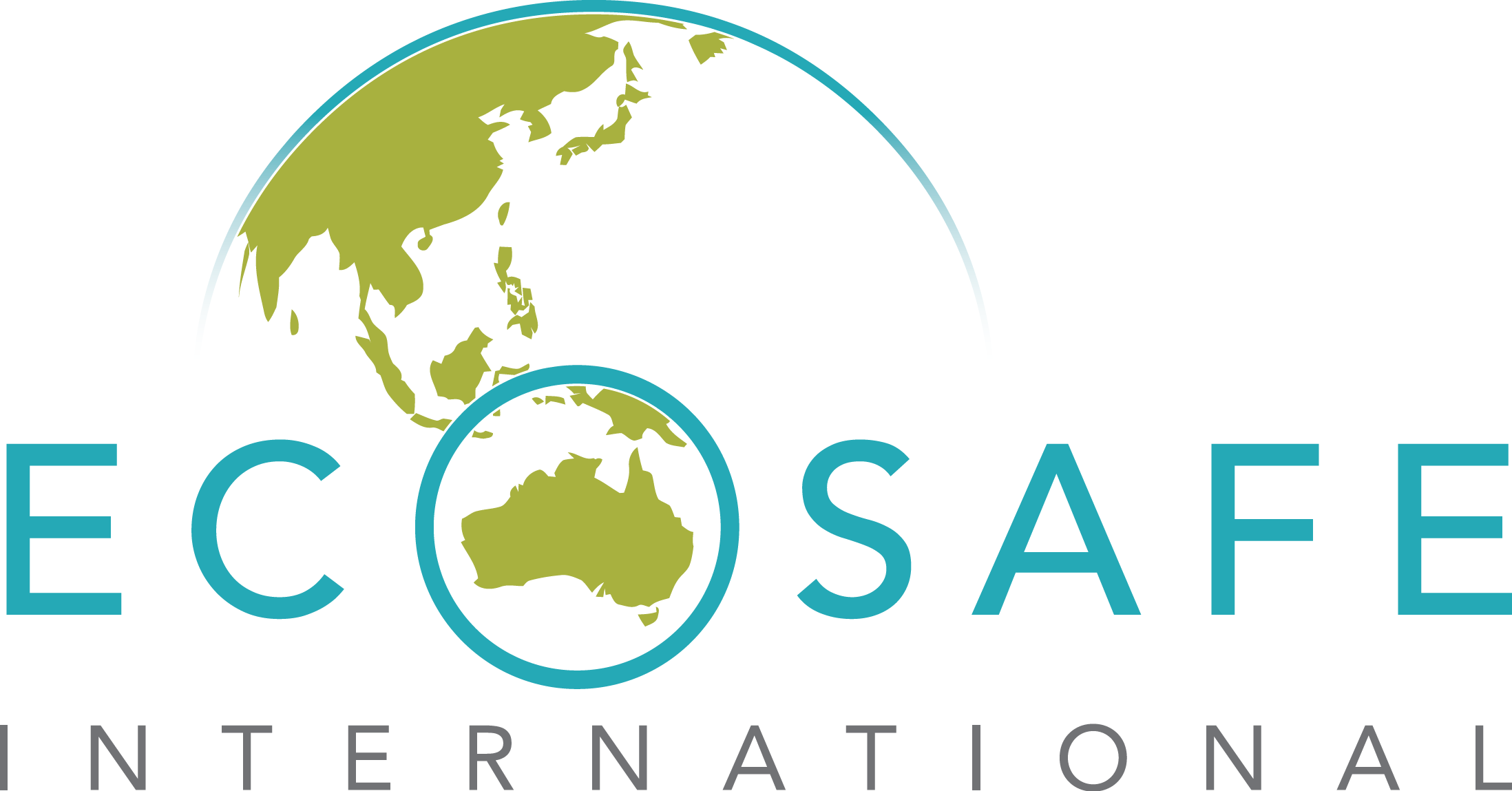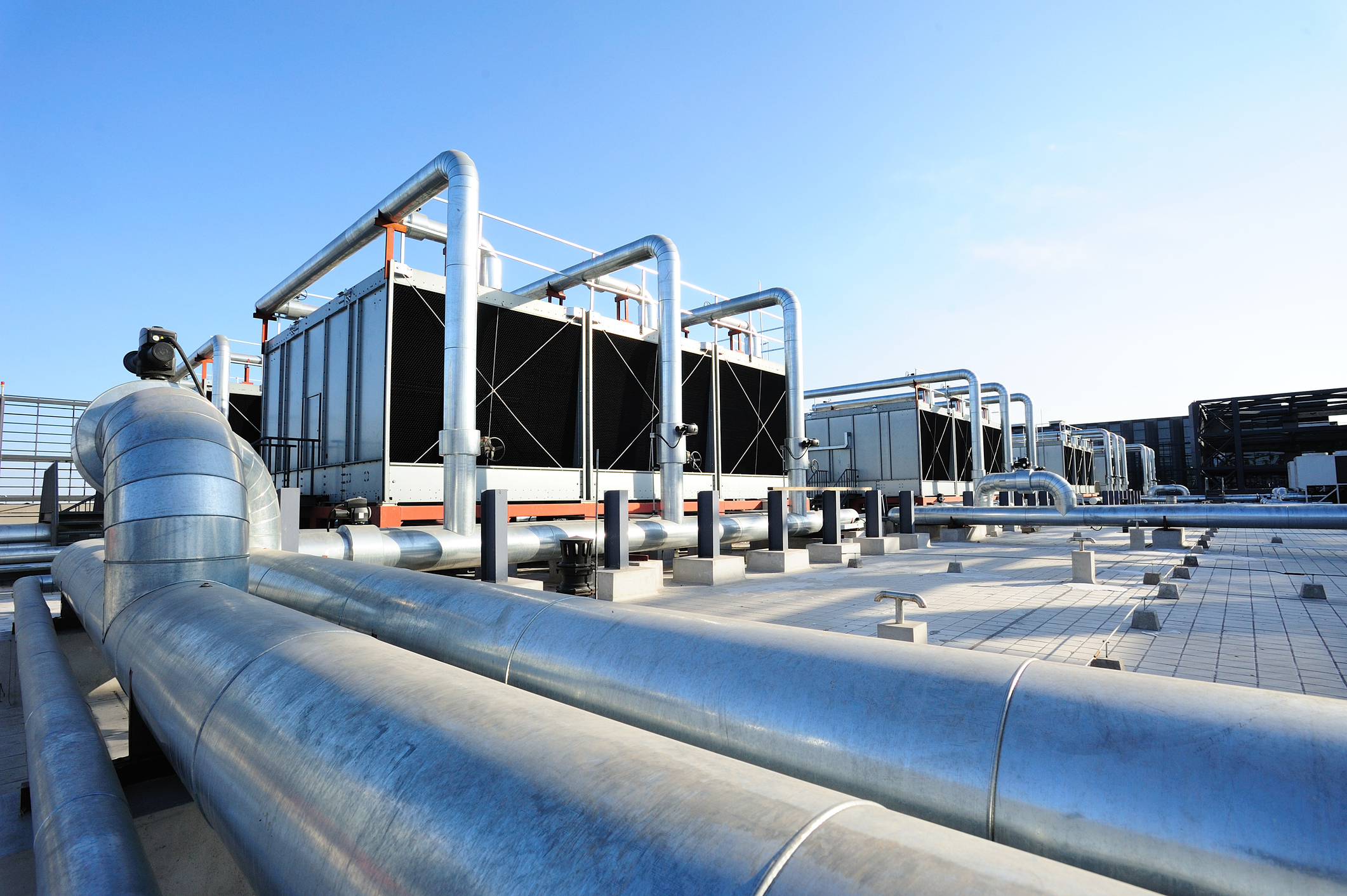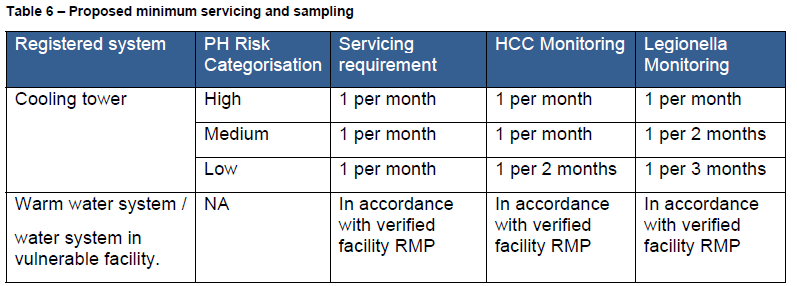Water system management & air-handling in Western Australia are currently regulated under the Health (Air-handling and Water Systems) Regulations 1994. The WA Department of Health (DoH) has recently undergone a consultation process to revise these regulations, and in November 2021 have published a final consultation paper proposing that new, updated regulations under the Public Health Act 2016 are to be adopted. The Minister has approved the creation of these new regulations; however, there are no clear timeframes for official adoption.The full details of the proposed changes can be found here – Regulation review program (health.wa.gov.au). Summary: Some key changes that are proposed to be adopted as part of the new regulations are included below. The below may assist in forward planning as part of the introduction of these regulations.
- The defining of ‘Registerable Systems’, which is a warm water system, a cooling water system (including cooling towers) or water systems that services a vulnerable facility. A vulnerable facility is further defined as a public or private hospital, or a residential care facility. These systems require registration with a relevant enforcement agency.
Some examples of this include:
- Your healthcare / residential care facility will fall under the vulnerable facility definition.
- Your cooling tower system(s) will fall under a registerable system.
- The warm water system at your Site/Facility will fall under a registerable system.
Note: A ‘warm water system’ has been defined as a reticulated water system that distributes or recirculates warm water through the majority of its branches by means of a temperature controlling device.
- A Risk Management Plan (RMP) will be required for all registerable systems.
- There will be requirements for routine reviews and independent auditing of the RMP (likely to be a desktop assessment).
- The extent and frequency of these requirements will be based on system risk that is yet to be defined.
- Table 5 (below) outlines the proposed frequencies.
- There are proposed minimum servicing and sampling requirements for registerable systems.
- Table 6 (below) outlines the proposed frequencies
- Mandatory Legionella reporting requirements for specific Legionella detection limits, for registerable systems.
You may wish to chat with your communications team in preparation, as this previously private data is proposed to be communicated to the DoH (who may end up publishing it online, similar to the QLD model).
Comprehensive Detail:
- New Regulations
- New regulations are proposed. A brief summary is provided with these dot points, further information in the following sections of this email.
- New regulatory provisions pertaining to registration, risk management plans, audits, and sampling, will only apply to air and water handling systems defined as ‘registerable’, being water systems in vulnerable facilities, cooling water systems, and warm water systems.
- All ‘registerable systems’ will be required to register with a relevant enforcement agency.
- New air and water handling systems will require independent certification for compliance with the BCA.
- ‘Registerable systems’ installed prior to the commencement of the new regulations will be required to register but will be exempt from the certification requirement
- A RMP will be required for all ‘registerable systems’.
- RMP’s will require verification by the enforcement agency. Templates and guidance will be provided by the DOH for this purpose.
- Independent auditors will audit the implementation of RMPs for ‘registerable systems. RMPs will require review every 1 – 5 years, depending on the public health risk categorisation of the system.
- Mandatory reporting of water sampling and testing results over set legionella thresholds will be required for registerable systems.
- Air handling systems will be a defined term that excludes dry systems that do not use water or other liquids to operate, humidify, clean, maintain, heat or cool the air.
- New and Revised Definitions
- Some important ones to note:
- Registerable system: A warm water system, a cooling water systems (includes cooling towers), and a water system that services a vulnerable facility
- Vulnerable Facilities: a public hospital as defined by the Health Services Act 2016 (WA), a private hospital as defined in the Private Hospitals and Health Services Act 1927 (WA), and a residential care facility in which persons who do not require constant medical attention receive residential care as defined by Aged Care Act 1997
- See Appendix 5.
- Regulatory Scope and Exemptions
- Some important ones to note:
- Car wash systems are included
- See Appendix 8
- Risk Rating of Facilities and Systems
- A risk matrix will be developed by DoH to further assess the public health risk posed by registrable air-handling systems.
- This categorisation will determine frequencies for audits and RMP reviews.
- It is not proposed to extend this additional categorisation to registerable water systems.
- Majority of these systems will be associated with vulnerable facilities, and a minimum frequency will be uniformly prescribed.
- Administration Requirements
- Currently, building owners / operators are required to obtain approval from their local government body before installing or modifying air handling / water system.
- Proposed, require the building owner to ensure each system is registered with the appropriate enforcement agency (to enable faster response in legionella outbreak, and facilitate compliance checks)
- For buildings where a ‘registerable’ system is located.
- One registration per building, but each system to be documented within that registration
- Registration can be undertaken by local government authority or by a centralised register held by the DoH.
- New regulations will enable registration periods between 1 – 5 years.
- Enforcement Agencies
- Following enactment of the regulations, it is intended to allow up to two (2) years for the registration of systems.
- BCA Certification Requirement
- It is proposed that the regulations shall require independent certification of new air handling systems for compliance with the BCA
- Existing registerable systems will be subject to the requirement for registration, however systems that are installed before the commencement of the new regulations will be exempt from certification requirements.
- Risk Management Plan development and reviews
- The requirement to development an RMP will be applicable to all registerable systems as defined by regulations.
- RMP development will be voluntary for systems that do not require registration, and compulsory audit requirements will not be applicable.
- The DOH acknowledges the need for RMP guidelines and templates for both air handling and water systems.
- Reviews and audits are a separate process.
- Reviews = assess adequacy of RMP by reviewing risks and associated control measures. Undertaken by a competent person (can be internal)
- Audits = determine if RMP is being sufficiently implemented. Undertaken by independent auditor.
- Risk Management Plan auditing
- Proposed to be statuary requirement for independent auditing (frequency per Table 5).
- DoH will be responsible for approving auditors and maintaining a publicly available list for approved auditors.
- Competency standards will be developed in conjunction with AIRAH and other organisations
- Audits will not require site inspections of the system.
- Mandatory system inspection requirements are detailed in a separate proposal.
- Audits are expected to be ‘desktop’ based.
- Auditors will be required to be independent from the facility and from the agent that developed the RMP.
- Auditors will need to report audit results to appropriate enforcement agency in a prescribed form and timeframe, for them to review.
- Monitoring Requirements
- Proposed requirements are per Table 6 below.
- Propose mandatory monthly inspections and operational requirements.
- Requirements for air handling systems will be based on AS/NZS 3666.2 and AS/NZS 3666.3
- Requirements for water systems will be based on AS/NZS3666.2 and enHealth Guidelines
- In addition to the above, the following are proposed:
- Systems not in use will require specific decommissioning and start up requirements (after long term shutdown)
- Response protocols for sampling results
- Cooling towers to have continuous / automatic biocide dosing
- Prescribed requirements for eh disinfection of recirculating water
- Mandatory Legionella Reporting Requirements
- Proposed reporting requirements in cooling tower systems:
- 10 – 1000 cfu/ml in three consecutive samples, while following resampling and disinfection protocols prescribed by the regulations, and
- >1000 cfu/ml in any sample
- Proposed reporting requirements in warm water systems:
- 10 – 1000 cfu/ml in three consecutive samples, while following resampling and disinfection protocols prescribed by the regulations, and
- >100 cfu/ml in any sample
- Reporting will be to the mandated reporting agency within 24 hours of receipt of lab report.
If you have any questions regarding water system management & air-handling in Western Australia, please feel free to contact us.
You can also stay up to date by connecting with us on Facebook or LinkedIn.
















